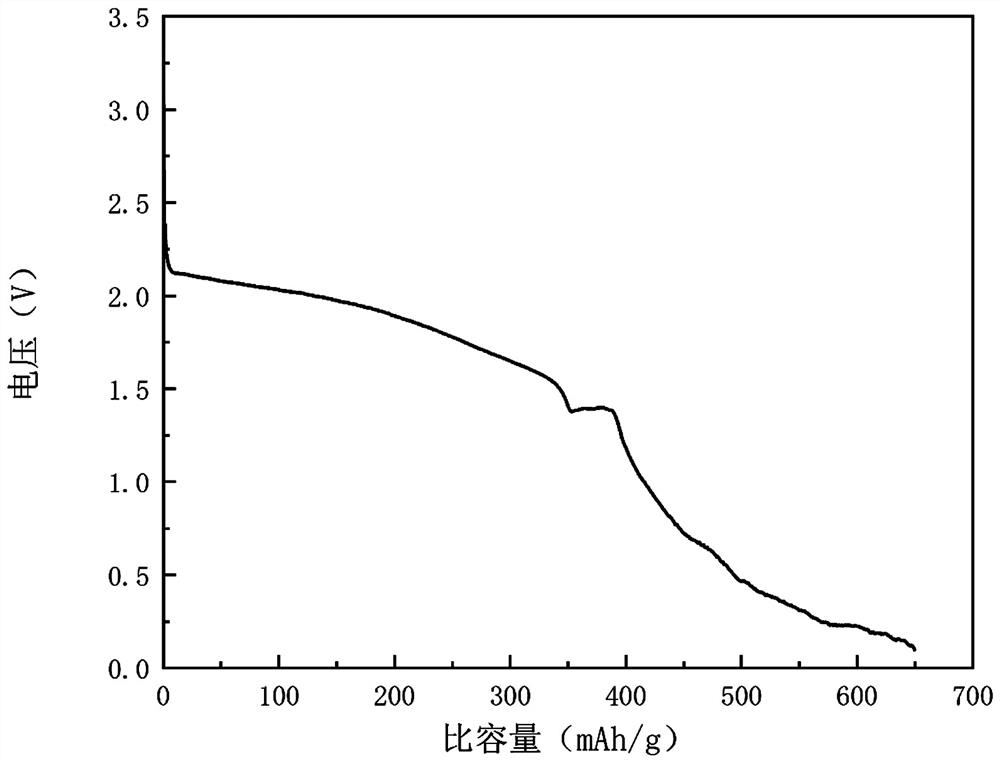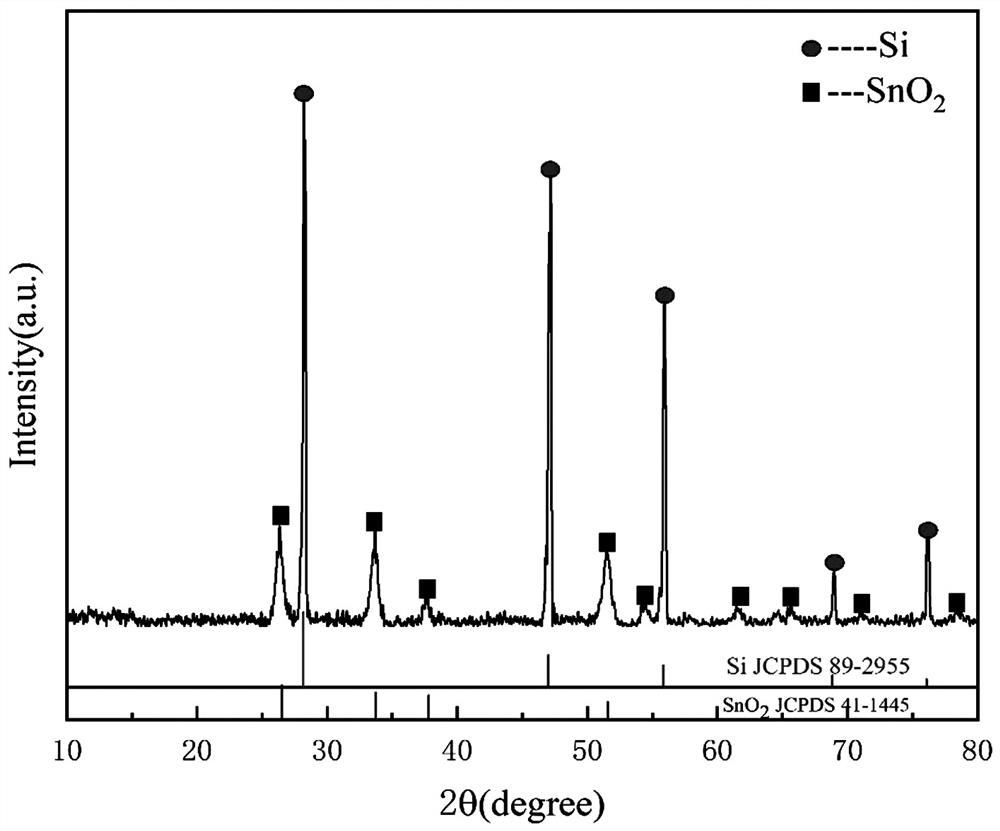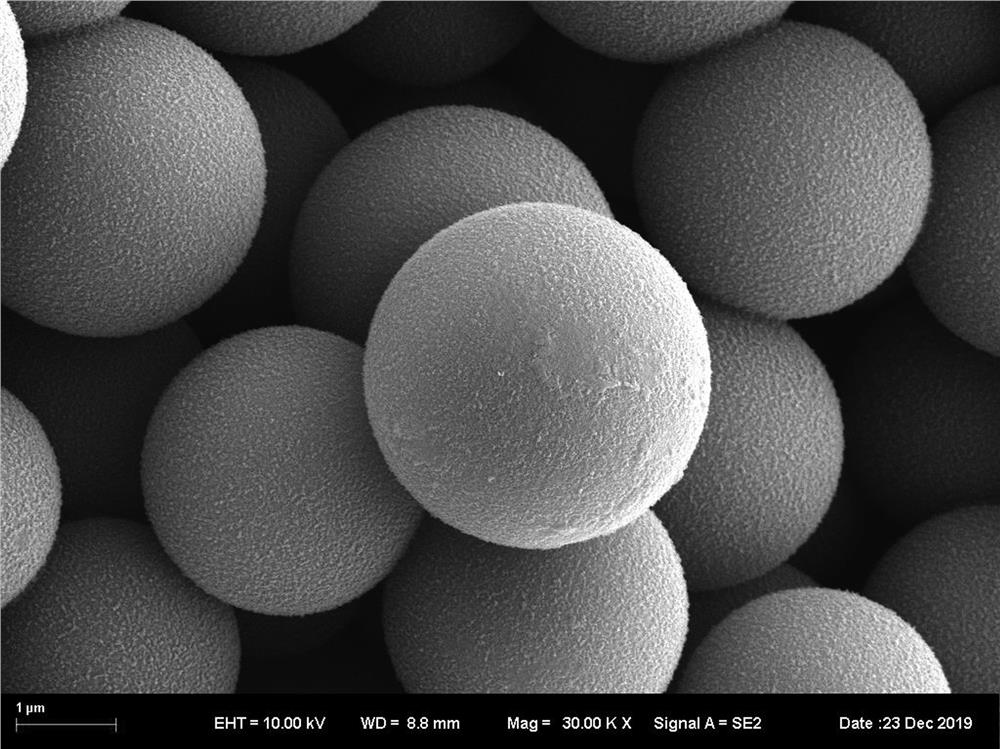Preparation method of Si@SnO2@C microspheres used as positive electrode material of high-temperature lithium battery
A high-temperature lithium battery and positive electrode material technology, which is applied in the direction of battery electrodes, lithium batteries, positive electrodes, etc., can solve the problems of low conductivity of high-temperature lithium batteries and capacity attenuation of high-temperature lithium batteries, and achieve good intrinsic electronic conductivity and enhanced Conductivity and the effect of preventing capacity fading
- Summary
- Abstract
- Description
- Claims
- Application Information
AI Technical Summary
Problems solved by technology
Method used
Image
Examples
Embodiment 1
[0032] A Si@SnO used as a cathode material for high-temperature lithium batteries 2 The preparation method of @C microspheres, the method is realized by the following steps:
[0033] 1) Perform surface activation treatment on silicon powder to obtain activated silicon powder;
[0034] 2) Weigh 0.2g of activated silicon powder, add the activated silicon powder into 80mL of deionized water, and disperse it ultrasonically for 30min to obtain solution A;
[0035] 3) Weigh 0.4g of glucose, add glucose into solution A, stir vigorously for 10min, and obtain solution B;
[0036] 4) Add 0.28g of stannous chloride and 0.04g of ammonium fluoride to solution B, and stir vigorously for 20min to obtain a precursor suspension;
[0037] 5) Transfer the precursor suspension to a 100mL polytetrafluoroethylene reactor, conduct a hydrothermal reaction at a reaction temperature of 160°C for 16 hours, then cool to room temperature, and collect the precipitate;
[0038] 6) After cleaning and dryi...
Embodiment 2
[0052] A Si@SnO used as a cathode material for high-temperature lithium batteries 2 The preparation method of @C microspheres, the method is realized by the following steps:
[0053] 1) Perform surface activation treatment on silicon powder to obtain activated silicon powder;
[0054] 2) Weigh 0.4g of activated silicon powder, add the activated silicon powder into 80mL of deionized water, and disperse it ultrasonically for 30 minutes to obtain solution A;
[0055] 3) Weigh 1.2g of glucose, add glucose into solution A, stir vigorously for 10min, and obtain solution B;
[0056] 4) Add 0.5g of stannous chloride and 0.09g of ammonium fluoride to solution B, and stir vigorously for 30min to obtain a precursor suspension;
[0057] 5) Transfer the precursor suspension to a 100mL polytetrafluoroethylene reactor, conduct a hydrothermal reaction at a reaction temperature of 200°C for 36 hours, then cool to room temperature, and collect the precipitate;
[0058] 6) After cleaning and ...
Embodiment 3
[0072] A Si@SnO used as a cathode material for high-temperature lithium batteries 2 The preparation method of @C microspheres, the method is realized by the following steps:
[0073] 1) Perform surface activation treatment on silicon powder to obtain activated silicon powder;
[0074] 2) Weigh 0.25g of activated silicon powder, add activated silicon powder into 80mL of deionized water, and disperse by ultrasonic for 30min to obtain solution A;
[0075] 3) Weigh 0.6g of glucose, add glucose into solution A, stir vigorously for 10min, and obtain solution B;
[0076] 4) Add 0.36g of stannous chloride and 0.05g of ammonium fluoride to solution B, and stir vigorously for 24min to obtain a precursor suspension;
[0077] 5) Transfer the precursor suspension to a 100mL polytetrafluoroethylene reactor, conduct a hydrothermal reaction at a reaction temperature of 175°C for 20 hours, then cool to room temperature, and collect the precipitate;
[0078] 6) Clean and dry the collected pr...
PUM
 Login to View More
Login to View More Abstract
Description
Claims
Application Information
 Login to View More
Login to View More - R&D
- Intellectual Property
- Life Sciences
- Materials
- Tech Scout
- Unparalleled Data Quality
- Higher Quality Content
- 60% Fewer Hallucinations
Browse by: Latest US Patents, China's latest patents, Technical Efficacy Thesaurus, Application Domain, Technology Topic, Popular Technical Reports.
© 2025 PatSnap. All rights reserved.Legal|Privacy policy|Modern Slavery Act Transparency Statement|Sitemap|About US| Contact US: help@patsnap.com



